As the dust settles on the initial explosions of the Health and Social Care Act reforms, HSJ’s latest roundtable brought together leading figures from health to thrash out the broader and finer points that have arisen in the first six months of change. By Daloni Carlisle
Roundtable participants
Charles Alessi, chair, National Association of Primary Care
Helen Buckingham, chief of staff, Monitor
Sir Peter Dixon, chair of Barking, Havering and Redbridge University Hospitals Trust (roundtable chair)
Jan Filochowski, chief executive, Great Ormond Street Hospital for Children Trust
Richard Jones, executive director, Moorhouse
Jonathan Marron, director of strategy, Public Health England
David Radbourne, chief operating officer, Chelsea and Westminster Hospital Foundation Trust
John Rooke, chief operating officer, Bedfordshire CCG
Elizabeth Wade, deputy policy director, NHS Confederation
Simon Weldon, regional director of operations and delivery, NHS England (London region)
John Wilderspin, managing director, Central Southern CSU
Stephen Vinall, managing director, Moorhouse
When transformation consultancy Moorhouse asked 153 NHS board and director-level managers about the impact of the NHS reforms stemming from the Health and Social Care Act 2012, three answers came back loud and clear.
The first was about communicating the vision for the NHS. The absence of a clearly communicated vision is creating a disconnect within and between organisations across the sector.
The second was the NHS struggle with managing change. Across the sector, change is not being managed effectively, risking failure in realising the transformation’s intended benefits.
The third concerned collaboration. Uncertainty around how to collaborate across the sector is diminishing organisations’ ability to deliver joined up solutions to address the unprecedented challenges they face.
Road to recovery
In November 2013, HSJ and Moorhouse convened a roundtable to discuss these conclusions – and find ways to put the NHS on the road to recovery.
The first thing to note is that none of these conclusions came as a surprise to our panel – they are almost inevitable six months into the biggest transformation the NHS has ever undertaken. As Stephen Vinall, managing director of Moorhouse, noted: “Change is really tough and we are just at the beginning of it.”
The second is that they are interlinked. As roundtable chair Sir Peter Dixon, chair of Barking, Havering and Redbridge University Hospitals, put it: “Without a clear vision, it becomes difficult to collaborate.”
Charles Alessi, chair of the National Association of Primary Care, added: “Without that vision it is difficult to manage change because you do not know where you are going.”
‘Without that vision it is difficult to manage change because you do not know where you are going’
Charles Alessi
Dr Alessi argued that organisations were struggling to articulate a vision – and this was down to some fundamental dysfunctions in the system.
Some parts of the system are funded through capitation while others are funded through activity, he pointed out. Some parts are focused on ensuring that the organisation survives and some parts are looking towards a population.
“The NHS is an extraordinary organisation,” he said. “If we are told that there is now an initiative on green tomatoes, by the end of the week there will be 17 organisations with a green tomato strategy. But that is not a vision – and no-one has had the bravery to articulate a vision.”
Vision not enough
John Wilderspin, managing director of Central Southern CSU, said vision was not enough. “My observation is that where systems are working together and making a difference it is because leaders have changed their behaviour and have encouraged their staff to have a shared vision and to move to collaborative behaviours.”
‘Where systems are working together and making a difference it is because leaders have changed their behaviour’
John Wilderspin
It was a point well made, said Elizabeth Wade, the NHS Confederation’s deputy policy director, and it highlighted a tension within the NHS: national versus local.
Local bodies, as was the intention of the reforms, are starting to collaborate. “But national bodies are understandably asserting themselves and trying to figure out their role,” she said. “They are behaving in quite a top-down manner, despite the rhetoric.”
As an example, she cited recent work by The King’s Fund showing that health and wellbeing boards (HWBs) are now influencing CCG commissioning plans, yet HWBs have no influence over NHS England.
“So at a local level people can come up with their vision but they are looking to different parts of the national system and get a disjuncture,” she said.
John Rooke, chief operating officer of Bedfordshire CCG, agreed. He described the lack of vision as [former health secretary Andrew] “Lansley’s legacy” and pointed out: “It is up to us to define what we are going to do.”
This had left some feeling paralysed. “We are like zoo animals whose cages have been opened. We do not want to leave: we have been institutionalised. There are some brick walls we will have to run through and we will have to collaborate to do that.”
‘We are like zoo animals whose cages have been opened. We do not want to leave: we have been institutionalised’
John Rooke
So what should that vision be? Jonathan Marron, director of strategy, Public Health England, argued that the NHS needs the bigger, public health vision.
“The idea that avoiding an amputation for a diabetic patient is a good outcome does not challenge the wider idea that we could have stopped the person becoming diabetic in the first place,” he said by way of illustration.
NHS commissioners had never asked the “first order commissioning question: how do we allocate money? How do we allocate £100bn to best effect?”
It was time for a challenge to this consensus and that came from Simon Weldon, regional director of operations and delivery for NHS England (London region).
First, he pointed out where we are now. “We have been through a massive transition and in actual fact we have survived and managed our way into the new system. The fact is we are working together and starting to build.
‘We have been through a massive transition and in actual fact we have survived and managed our way into the new system’
Simon Weldon
“On the vision question, I would say that NHS England is inviting a debate around the Call to Action [which asks for an open and honest debate from NHS staff, the public and politicians to help the NHS meet future demand and tackle the funding gap].”
Rethink on how services are bought
It would be a mistake, he suggested, to conflate the vision with the enablers and, harking back to Dr Alessi’s initial comments, argued: “We need to rethink the whole way we buy, pay for and contract for health services and the increasingly important role for local authority colleagues as commissioners.”
Helen Buckingham, Monitor’s chief of staff, moved the discussion on. “Organisations do not do things, people do things,” she said. And they can only do so when they have good governance and good relations, both of which are in flux.
She saw Monitor’s role as one of facilitating people to do things. If the payment system was a barrier, it is the payment system that needs changing, she said. “Monitor must not stand in the way.”
Sir Peter picked up the point about relationships. “One of the problems is that we have changed our organisations so we do not have relationships. Until we have those we will not have structures that work,” he said.
‘One of the problems is that we have changed our organisations so we do not have relationships’
Sir Peter Dixon
Jan Filochowski, chief executive of Great Ormond Street Hospital for Children Trust, wanted an inclusive vision – one that gets away from what he called the “default”, competitive visions that stood in the way of collaboration.
He characterised them as, on one side, the ideology that hospitals are a waste of time and everything should be put into the community, versus the hospital-centric view which says: “This is where the ill people are, stupid, and that’s why we have a hospital.”
Inclusive visions
Neither was wholly correct but they led to entrenched positions from which it was difficult to collaborate, he said. There had been some moves to overcome this – the academic health science networks had attempted, however imperfectly, to create a safe space to start to talk about inclusive visions.
But he feared “our structural situation at the moment and our drive for accountability and clarity leaves us with blame as the only driver – and that drives people apart.”
‘Our structural situation at the moment and our drive for accountability and clarity leaves us with blame as the only driver’
Jan Filochowski
The view from Chelsea and Westminster Hospital Foundation Trust as described by David Radbourne, chief operating officer, looked rather different, however. He described the set of relationships he has needed to build over the last year to not just do his job but to effect change. The list included NHS England (half the trust budget comes from specialist commissioning); Monitor, the Trust Development Authority; local authorities and CCGs.
It was important to understand who you needed to talk to about what and with what objective in the now highly fragmented NHS, he added. Making connections like this needed to be part of a five-year planning process, he suggested. It helped if the people involved had wide experience in the NHS and the ability to see other people’s perspective.
Use of competition
Sir Peter was keen next to introduce a new strand to the debate: competition. “We read about not being allowed to collaborate because of rules on competition,” he said. “But in my view, competition is not necessarily in opposition to collaboration. How can we use competition rather than let it get in the way?”
Ms Buckingham pointed out that historically the NHS had seen mergers as a way of fixing problems. Sometimes this worked – she cited UCLH and East Kent successfully taking on troubled organisations – but often it did not. Everyone at the table was able to point to some well-known examples, including South London’s hospital sector.
At the time of the debate, Monitor was preparing a letter spelling out a new approach. “We want trusts that are contemplating merger to come to us at a very, very early stage to say ‘this is the problem and this is why we think merger is the right thing’.
‘We want trusts that are contemplating merger to come to us at a very, very early stage and say this is why’
Helen Buckingham
“We will work with them in a challenging and constructive way to say ‘have you diagnosed the problem properly?’. Trusts can then work in local systems knowing that they have a very early view on strategic issues.”
Provided merger is the right solution to the right problem, Monitor would then be in a position to provide a statement to the Office of Fair Trading on the benefits of the merger for patients and people and whether they outweigh the potential losses.
Yes, she acknowledged, trusts and systems would remain nervous of public reaction and concerned about their ability to communicate perceived benefits of mergers.
“This is tricky to overcome and we are talking to politicians about it,” she said. “We are doing our best to work with systems and OFT and the Competition and Markets Authority to take out as many barriers as we can.”
Section 75
The other technical issue in competition is section 75. Ms Buckingham said: “We are working jointly with NHS England on the guidance and we are adamant that section 75 transfers do not mean everything in sight has to be tendered. But equally, we are adamant that it means you need to be good at commissioning and understanding what your population needs.
“In some circumstances that will mean going to market. In some circumstances that will be sticking with your original provider,” she said.
That all sounded rational to Ms Wade but she had a question: “Whose decision trumps whose? Do we leave it to the local commissioners and population or is it down to national bodies and regulators to say ‘you have not made a good enough case’?”
‘Whose decision trumps whose? Do we leave it to the local commissioners and population?’
Elizabeth Wade
Certainly from a section 75 perspective, it’s a local decision, said Ms Buckingham. From a merger perspective, there is a real need to evidence the course of action.
Improvement driver
More broadly, the panel discussed competition as a lever. To what extent is competition useful in driving improvements? Quite a lot if it is a case of pointing out to clinicians that their colleagues down the road are outperforming them. To what extent do people (or patients, or customers) have the power to choose and drive competition? Not much, was the initial conclusion, although Mr Rooke delved into the matter more deeply.
CCGs, he predicted, will be looking to develop fewer and larger contracts asking for providers to compete on the basis of real choice for patients and best outcomes for populations, where risk is shared and interests aligned to the needs of the population.
That would require commissioners to support providers but currently the degree of collaboration to achieve that did not exist. “That market is not developed yet, and I wish it was,” he said.
Others explored the extent to which the NHS marketised. “We have created the incentives of the market with none of the consequences of failing within it,” noted Mr Weldon. “That has created a profound series of perverse incentives, for example payment by results where you seek more and do more.”
Be careful what you wish for, counselled Mr Filochowski. For a start, hospitals are required to run a number of services and do so at a loss - urgent care being one of them. Destabilising them and allowing them to fail would be catastrophic, he implied.
‘It is of no value to me to have year on year non-elective admissions where 50 per cent of them could theoretically be treated in the community’
David Radbourne
Mr Radbourne again offered an alternative vision when he described how, earlier this year, his trust along with the local CCG cluster and the community provider had agreed to suspend PbR. They are working together to drive down non-elective admissions by 5 per cent, with CQUINs to reward this.
“It is of no value to me to have year on year non-elective admissions where 50 per cent of them could theoretically be treated in the community,” he said. “So far it is working. You do not need to feel constrained by the system that theoretically rewards trusts for more admissions.”
It fell to Sir Peter to sum up. “At the end of the day we should be making sure it is all about outcomes for patients. The currency is the patient. I do not want to be a patient, I want to be out of contact with the medical profession. All the time I spend not being in the care the NHS, the better. That’s what we need to be aiming for. All of us.”
Vision is needed from the top
The health sector in England is grappling with a major transformation of the way care is commissioned, provided and regulated. These far-reaching reforms intend to create a more responsive, efficient and accountable NHS in the face of significant challenges.
We commissioned our Fit for the Future? research to understand how health sector leaders are coping with the implications of this transformation for themselves, their organisations and the sector as a whole.
Our survey of 153 senior leaders identified significant concerns about the effects of the reorganisation. As the roundtable panel acknowledged, this is not surprising given the magnitude of change.
Change in any sector or organisation takes time to embed. It can also result in delivery challenges, as resource and focus is diverted to help with change implementation.
Subsequently, productivity challenges often arise as people adjust to new, unfamiliar roles – further accentuated by a need to establish new internal and external relationships to deliver their goals.
Undoubtedly this is an incredibly challenging period for the health sector. However, change is not an unfamiliar concept for the NHS. During the roundtable discussion it was clear that many organisations in the new system are already working closely together to make improvements, developing innovative ways to grapple with shared challenges.
For the new system to be effective, leaders across the health sector must create a clear vision for their organisations, foster a culture that supports change and, in the context of a more fragmented system, encourage bold and innovative collaboration with the other organisations they are now reliant on to achieve their strategic goals.
Richard Jones is executive director at Moorhouse





















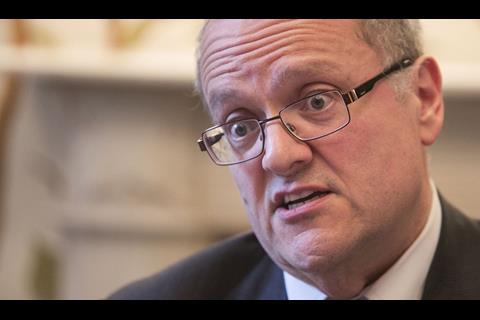
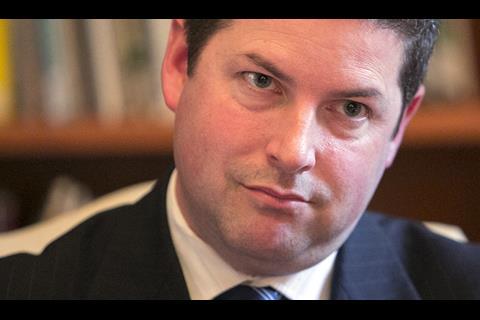
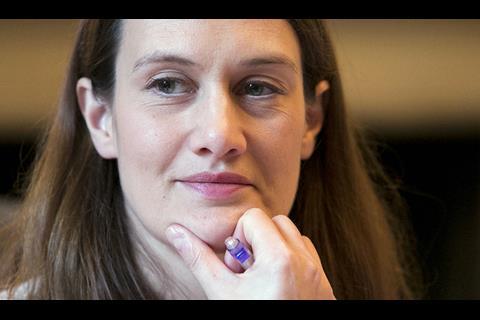




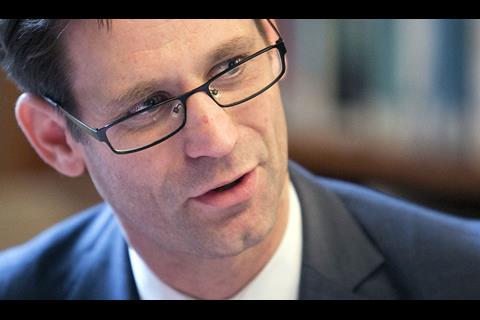
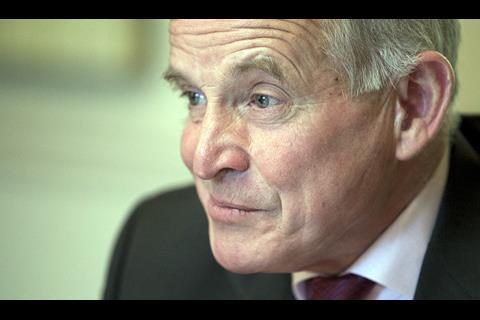









1 Readers' comment